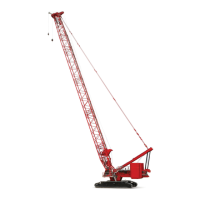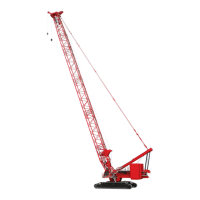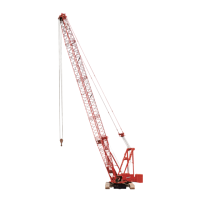Manitowoc Published 11-22-17, Control # 257-02 2-29
MLC300 SERVICE/MAINTENANCE MANUAL HYDRAULIC SYSTEM
Initial Hydraulic System Startup
The following procedure is used at the factory to start a new
crane engine for the first time. It is necessary to use this
procedure in the field only if the entire hydraulic system has
been drained.
The procedure requires two people—one to start the engine
and monitor pressures on the diagnostic screens, and one to
monitor gauge pressure and check for leaks.
1. Before starting the engine, calibrate the pressure
transducers (see the procedure in the MLC300 Main
Display Operation Manual).
2. Make sure the hydraulic tank shut-off valves are fully
open. The pumps can be damaged from cavitation if this
step is not performed.
3. At the engine, disengage the engine clutch (see
Figure 2-24
).
4. Start the engine at the lowest possible speed and make
necessary adjustments before engaging the engine
clutch.
5. Slowly engage and disengage the engine clutch and
check for charge pressure in closed-loop circuits.
6. Fully engage the engine clutch.
7. Purge air from the open-loop circuit work lines for the
Drum 4, Left Travel, and Right Travel as follows.
a. Activate Drum 4 with no more than 20% handle
command at low engine idle speed for 1 to 2
minutes.
b. Repeat step a
for all remaining open-loop circuit
work lines.
8. Calibrate the controls and perform the charge pressure
and high pressure checks as instructed in the MLC300
Main Display Operation Manual.
a. Make sure the pressure reading for each pump is at
30 bar (440 psi) standby pressure in the open-loop
circuits.
b. Make sure the pressure reading for each pump is 22
to 25.5 bar (250 to 370 psi) in the closed-loop
circuits.
c. If the pump pressures are not within the specified
range, stop the engine immediately. Determine the
cause of the faulty pressure and correct.
9. With the engine at low idle, extend and retract all
cylinders three times (gantry cylinders, mast cylinders,
backhitch pins, cab tilt, boom hinge pins, carbody jacks,
and crawler pins).
If the oil level drops to 80%, the fault alarm comes on
and the Hydraulic Fluid Low icon appears in the Alert
Bar of the main display. Fill the tank immediately.
10. With the engine running at low idle, slowly cycle each
crane function in both directions for at least five minutes
to vent any remaining air from the hydraulic system.
11. Be sure all crane functions operate in the proper
direction with relation to control handle movement.
12. Check for hydraulic leaks and correct the cause, if
found.
13. Stop the engine and fill the hydraulic tank to the proper
level.
14. Perform the hydraulic tests and calibrations (see
Hydraulic Tests and Calibrations on page 2-30
).
WARNING
Burn Hazard!
The oil in the hydraulic tank may be under pressure and
extremely hot. Hot oil can escape when servicing
components.
Before opening the tank for any reason, relieve any
pressure from the tank using the Schrader valve or the
vent valve (see Figure 2-15
).
CAUTION
Avoid Damage to the Hydraulic System!
If the Hydraulic Fluid Low alarm comes on at any time
during the startup procedure, add oil to the tank.
CAUTION
Avoid Engine Clutch Damage!
Observe the following precautions for the engine clutch:
• Decrease the engine speed to idle before engaging
or disengaging the engine clutch.
• Do not run the engine longer than 20 minutes with the
engine clutch disengaged.
CAUTION
Equipment Damage!
Check pump pressures during the first two minutes of
operation. If the pressure for any pump is not within the
specified range, stop the engine immediately to prevent
pump damage. Troubleshoot to determine the cause of
the problem.
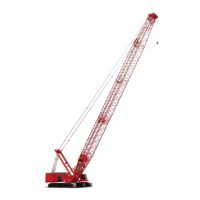
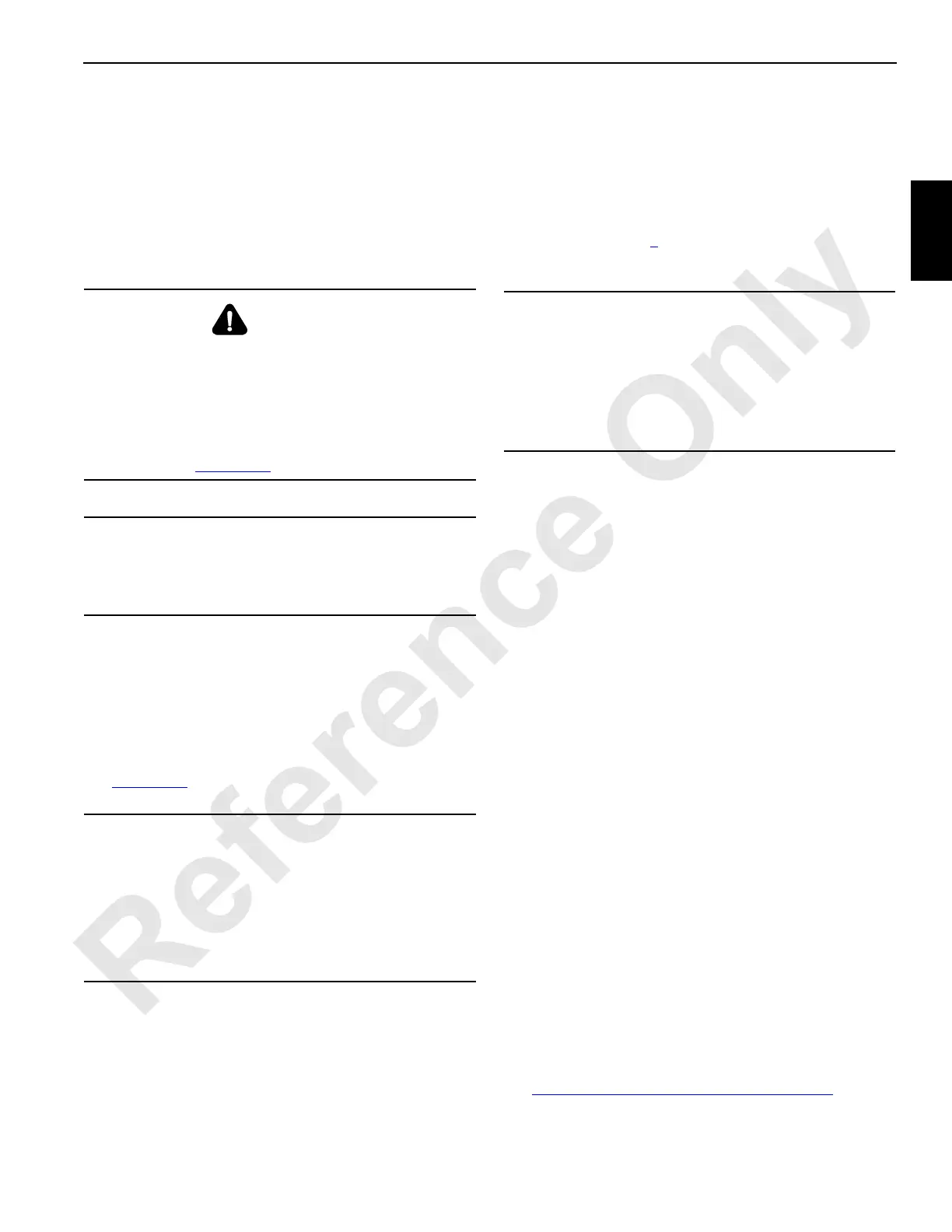